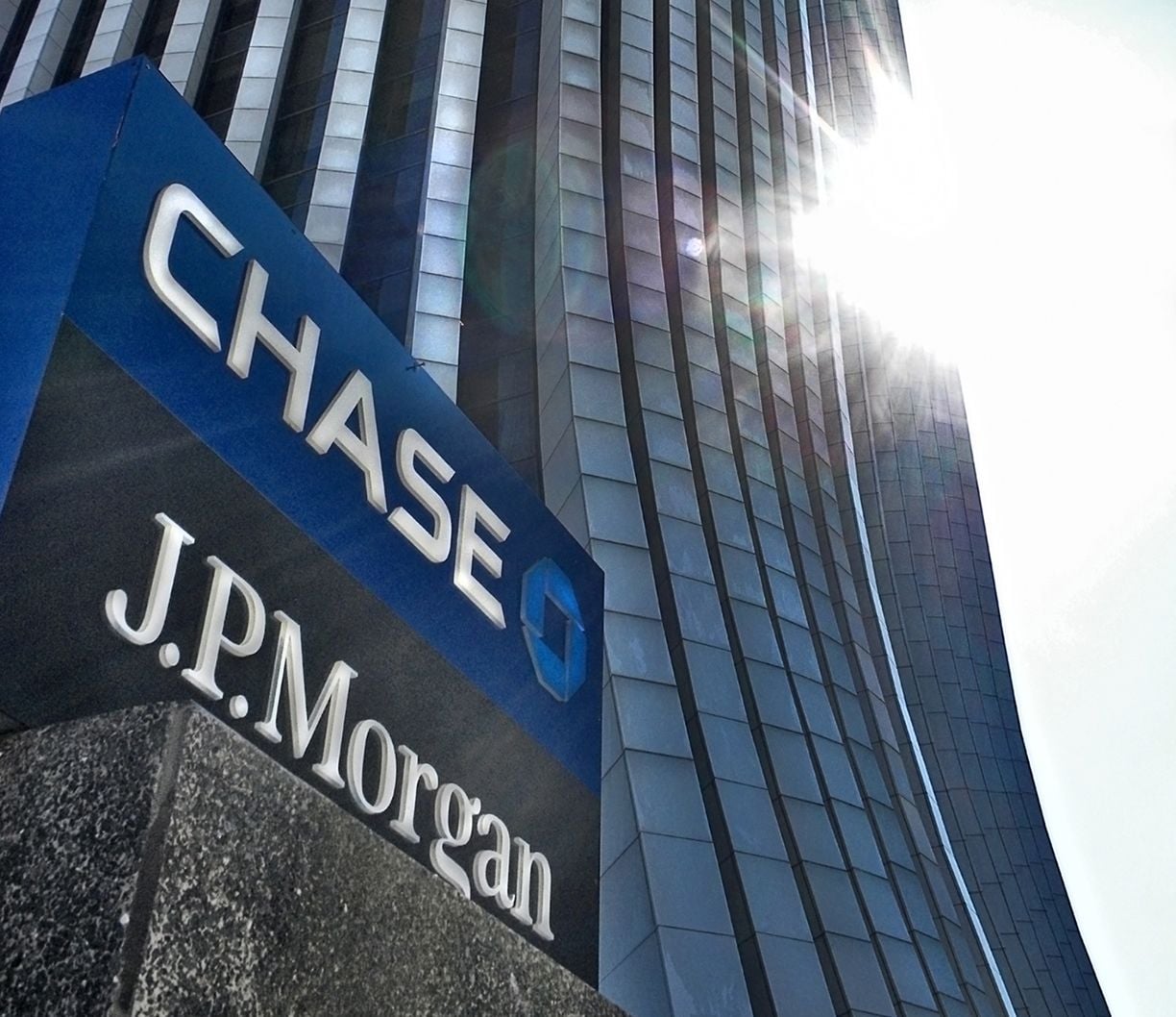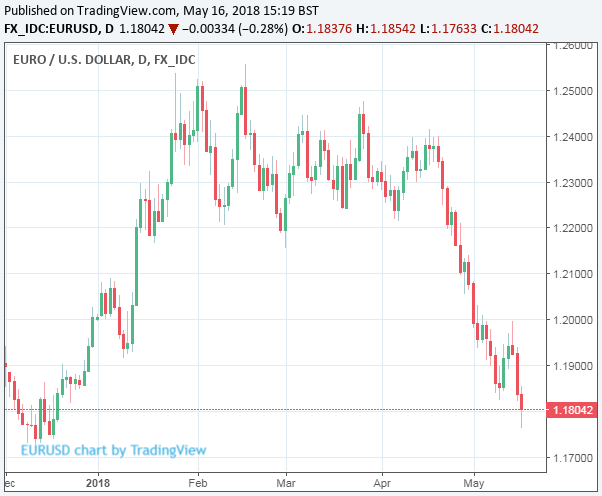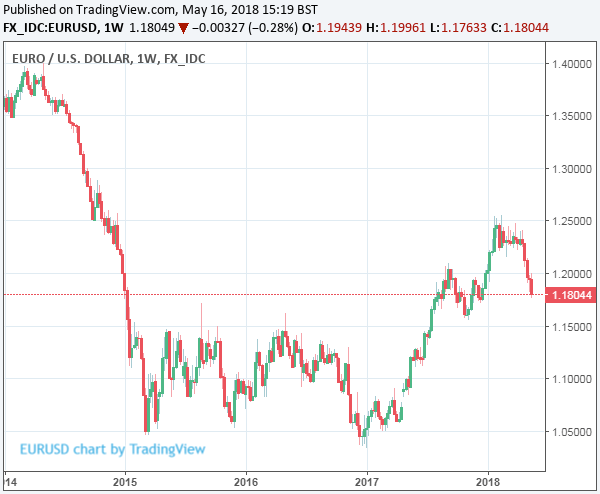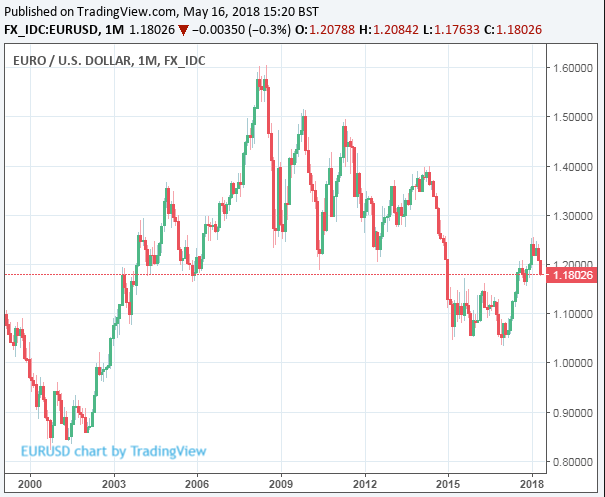Euro-Dollar Forecasts Cut at J.P. Morgan
- Written by: James Skinner
- EUR/USD forecasts downgraded by 2-4 cents at J.P. Morgan.
- Economic uncertainty and strong Dollar blamed for reductions.
- Italian politics an increasingly pronounced threat to Euro in 2018.

Tower, New York © Kristen Cavanaugh, Flickr
The Euro-to-Dollar rate outlook is less bullish than previously thought, according to the latest forecasts from J.P. Morgan, although the single currency is still unlikely to spend very long quoted at its recent low levels.
J.P. Morgan's forecast changes come after run of softer first-quarter economic data placed a question mark over the reflation and European Central Bank policy-normalisation narrative and after the US Dollar emerged resurgent from the depths of a year-long slump.
These two things have snuffed out and partially-reversed the meteoric rally that had driven the single currency up by 15% against the Dollar during the 12 months to the end of February, leaving the Euro-to-Dollar rate trading at a year-to-date loss of 1.84% Wednesday.
"Last month we indicated we might need to revisit our bullish EUR forecasts if economic data in the region failed to recover and instead challenged our assumption of continued reflation and eventual policy normalistion from the ECB," says Paul Meggyesi, vice president of global currencies and commodities at J.P. Morgan, in a recent note. "We can’t entirely overlook this 1.5 sigma drop in EUR/USD and so this month we are lowering the forecasts by 2-4 cents."

Above: Euro-to-Dollar rate shown at daily intervals.
Meggyesi describes the EUR/USD forecast revisions a "mark-to-market excercise" and reiterates the house view that the Euro will eventually resume its uptrend, although there is uncertainty around the question of if it can extend much beyond recent peaks. Eurozone economic data, European Central Bank monetary policy and price action in US bond markets will be key to whether it does.
"Since then the downdraft in data surprises has been arrested, albeit without much evidence yet of an marked upturn in the hard data, and our economists remain confident that the region is poised to rebound from what they regard as a technical and distorted soft patch in 1Q. But despite an improvement in the flow of data surprises, EUR/USD has slumped out of its prior range, dropping by 4% in keeping with the broad based resurgence in the dollar," Meggyesi says.
Eurozone growth slowed during the first quarter in keeping with the trend seen elsewhere across the developed world, leading many strategists to become less optimistic in their previously-bullish outlook for the Euro. Some have even become outright bearish, advocating that clients bet against the single currency during the summer months.
The resulting fall in the Euro-to-Dollar rate has been compounded by a surge in American bond yields, which has widened the gap between the interest return offered to investors who buy US Dollar debt and that offered to those who buy Eurozone government debts like German bunds. This has created an additional incentive for large institutional investors to sell Euros in order to buy the Dollar and US bonds rather than vice versa.
"We continue to envisage a positive medium-term trajectory contingent upon a resumption of above-trend growth that culminates in an ECB pivot in 1H19. That being said, the negative tail risk for the EUR has increased," Meggyesi writes.

Above: Euro-to-Dollar rate shown at weekly intervals.
The J.P. Morgan team cites the possibility that the ECB will prolong the life of its quantitative easing program beyond year-end in response to the recent softer economic data as a key risk to their still-bullish outlook for the Euro.
Another big threat to a Euro recovery is the potential for a "Fed repricing" where markets would bet on a faster pace of rate hikes in the US, due to rising inflation and a better outlook for economic growth, which would further widen the bond yield differential in favour of the greenback.
The much vaunted "repatriation flows" that were once expected to drive the Dollar higher following the White House tax cuts announced in January as American companies shift their overseas profits back to the US to take advantage of more favourable tax rates also poses a threat to the Euro-to-Dollar rate.
Last but not least, the prospect of a Five Star Movement (M5S) and League government in Italy that rejects the post-crisis policy response to the continent's fiscal challenges and, potentially, renews an earlier push by each party to withdraw Italy from the Euro could also scupper any recovery by the single currency as the year progresses.
"Our franchise indicates this was weaker in April than March but repatriation could accelerate if corporates become worried about a stronger USD trend," says Meggyesi. "As for Italy, a Northern League/Five Star government seems increasingly probable (with or without a fresh election) which could put Italy on a collision course with the EU, especially on fiscal policy."

Above: Euro-to-Dollar rate shown at monthly intervals.
Meggyesi says an M5S and League government would be unlikely to impact markets unless the coalition also renewed their push to withdraw from the Euro. However, a Huffington Post Italy report claimed on Wednesday that both parties have discussed possible mechanisms through which Italy could leave the Euro.
The report also claimed both parties have floated the possibility, in meetings with eachother, of asking the ECB to cancel as much as 250 billion of Italian government debt bought by the bank under its quantitative easing programme.
This highlights that the threat to the Euro from anti-establishment forces in Europe in still alive and well, while vindicating the J.P. Morgan team for the decision to reduce their Euro-to-Dollar rate forecasts.
Meggyesi and the J.P. Morgan team forecast the EUR/USD rate will rise to 1.22 before the end of June, 1.24 before the end of September and 1.25 by before the year is out. These are downgrades from earlier forecasts of 1.26, 1.27 and 1.28 respectively.
Advertisement
Get up to 5% more foreign exchange by using a specialist provider to get closer to the real market rate and avoid the gaping spreads charged by your bank when providing currency. Learn more here.




